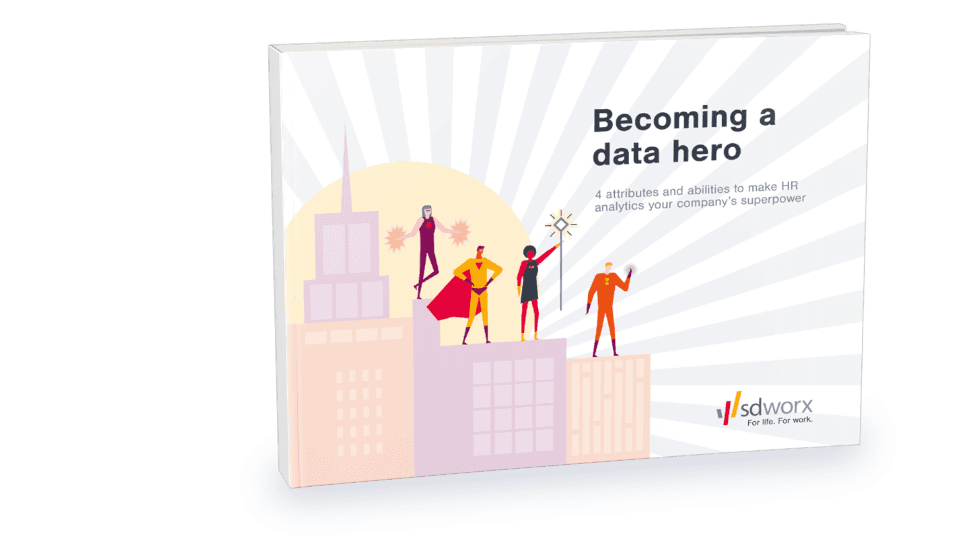TIP
It’s important not to skip ahead. If you move from one phase of data maturity to the other too quickly, you risk putting a lot of time, effort and resources into your HR analytics project that you may need to do over later.

Turning HR data into valuable insights is a continuous process of learning and growth. It requires long-term thinking, knowing where you are and where you’ve been. In other words, it’s all about understanding how your past, present and future actions impact your end goal and destination.

While smaller companies don’t always realise how much data they gather without putting it to good use, larger organisations may be tempted to take their data initiatives to the next level too fast. Pinpointing where your organisation is on the HR analytics maturity scale will help you put things into perspective and take it one step at a time according to your needs and resources.
It’s not just access to HR data that helps your organisation make smarter decisions, it’s the way you analyse. In this respect, both small and larger organisations typically go through the following stages of HR analytics maturity, each with its own set of required skills, resources and technologies:
Parse historical data to map out the changes that have occurred within your organisation.
Answers the question: “What happened?”.
Deep dive into your data to search for insights and uncover the reason behind why certain changes occurred.
Answers the question: “Why did this happen?”.
Combine historical data with statistical modelling, benchmarking and other techniques to predict what could happen in the future.
Answers the question: “What might happen in the future?”.
Use data to determine an optimal course of action. While predictive analytics focuses on finding potential outcomes, prescriptive analytics also recommends steps you can take to affect those outcomes.
Answers the question: “What should we do next?”.
It’s important not to skip ahead. If you move from one phase of data maturity to the other too quickly, you risk putting a lot of time, effort and resources into your HR analytics project that you may need to do over later.
Generally speaking: the more advanced your data maturity, the more automated your analytics and decision-making processes become. However, this is far from a golden rule. Some organisations prefer to maintain a high level of ‘human intervention’ when analysing and interpreting data to make decisions – and that’s okay.
Depending on the needs of your organisation and workforce, a descriptive analytics approach may already be of great value. In other words, climbing the maturity ladder is not a goal, but a means to serve specific needs when they arise.
To make the right choice for your organisation, a thorough business case is a must if you’re thinking of investing in greater data maturity. So, be sure to:

Experts from SD Worx are happy to investigate the maturity of your data approach while offering access to the reports, tools and advice you need along the way.
Discover 4 skills to master to unlock the full power of your HR data and analytics.
